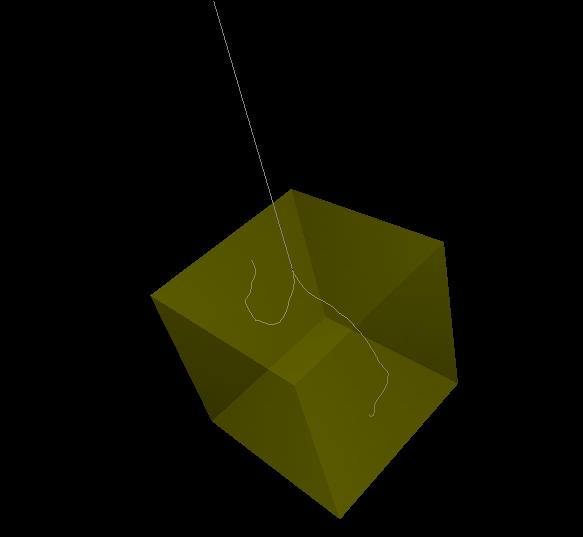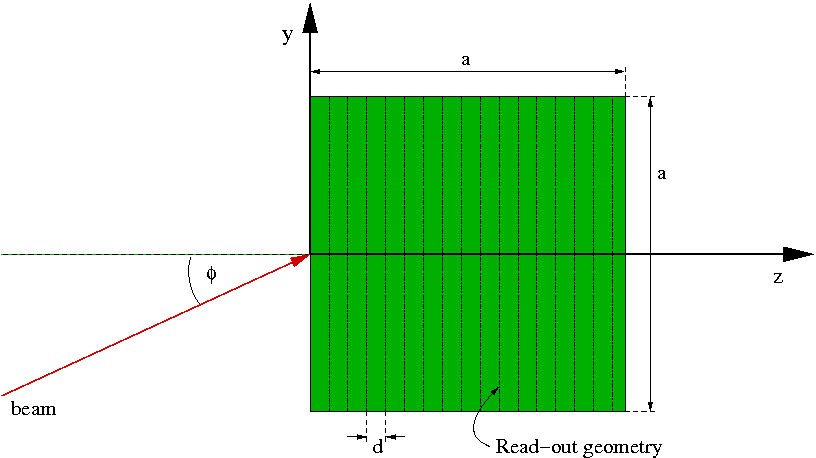
A Geant4 application example is provided, which serves as basis of the exercises. The same example is used as a starting point for each day, but the focus is on different parts of the application according to the specific topics presented in the morning lectures. Each day, the exercises include the modification and/or extension of a few classes of the simulation application.
A webpage was prepared for each exercise session, including instructions and hints, and links to solutions (which are only available after a given time interval). For each day, the exercises are grouped into several categories, which may cover different topics.
Links to the webpage for each day's exercise instructions can be found in the panel on the left.
On the panel you can also find important links, e.g. to the Geant4 software reference manual (online) or the Geant4 application developers manual.
The Geant4 simulation example used in the exercises models a simple cuboid silicon detector. An electron beam is shot onto the detector, where the energy distribution is a Gaussian. The following beam parameters can be changed via macro commands
The geometry is illustrated in the below figure (click on the figure to enlarge it (.gif format). Alternatively, click here to get a high-resolution .eps plot of the geometry, or here for a .pdf file).

The detector setup in the application example consists of
The physics setup is organized in a modular physics list with the following components:
Perform the following steps to prepare the environment:
Please note, that some exercises rely on the successful completion of previous exercises, i.e. previously introduced functionalities might be used at a later stage. These mandatory exercises are marked with a star next to the exercise number (*). If you don't manage to complete them by your own, try to understand the provided solutions and introduce the requested functionalites into your example.
The following pictures show detector of the application example (the pictures were obtained with different visualization tools: VRML and Ray tracer).
Screenshot from VRML visualization:
Ray tracer: